Sheaf of Wheat
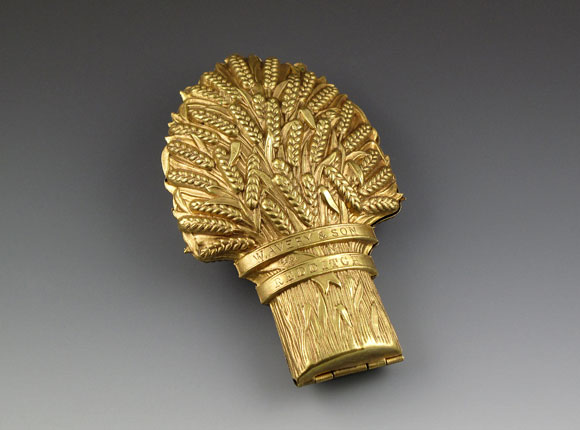
Needle Case
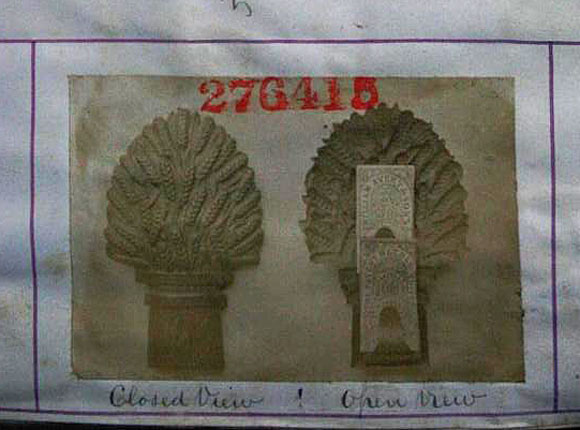
Design Representation
Design Details
Needle Case Type: |
Figural |
Patent/Registered to: |
William Avery & Son - Redditch |
Patent/Design Representation #: |
Ornamental Class1: Metal: #276415 |
Patent/Design Registration Date: |
September 23, 1873 |
Location of Patent/Design Registration: |
The National Archives (TNA) - Kew, UK |
Reference #: |
TNA Representation - BT 43/35/276415
TNA Register - BT 44/3/276415
|
Dimensions: |
5.5 x 2 x 8.75 |
Material: |
Brass |
Name Variations: |
a) W. Avery & Son – Redditch
b) Unmarked (the sole source of this information is Horowitz and Mann as no example of this needle case
with this company name has been seen by the authors of this website) |
Other Variations: |
a) With W. Avery & Son Redditch on one side and no text on the other side
b) With W. Avery & Son Redditch on one side and the Wheat Sheaf Needle Case text on the other side |
Additional Photographs
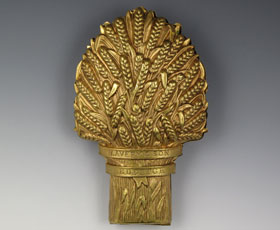
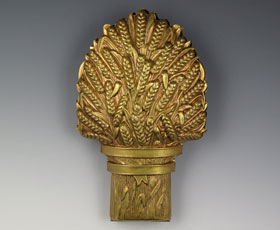
Front and back views
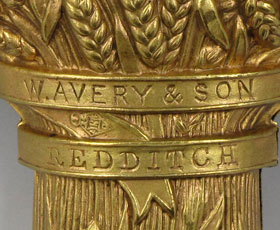
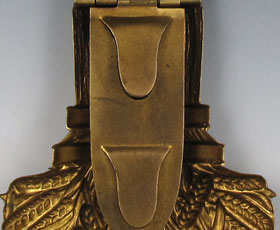
Front signature detail and interior detail
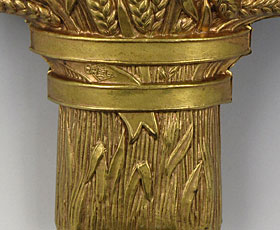
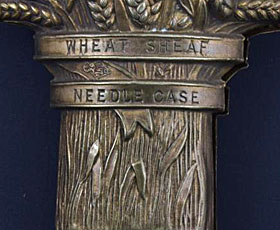
Back detail blank with no text and back detail with Wheat Sheaf Needle Case text (photo from eBay)
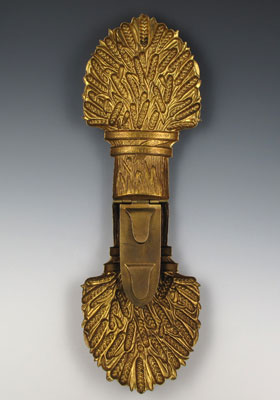
Interior open
Facts
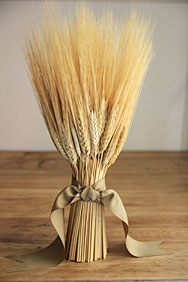
A sheaf of wheat is a large bundle of cut wheat stalks tied together to make it easier to thresh out the grain. When raw wheat is
ground it produces flour or semolina which is a major ingredient in such foods as bread, cereal, porridge and pasta. Because wheat is a
leading source of vegetable protein in human food it is grown around the world and is currently second to rice as the main human food crop.
The sheaf of wheat is found on many coat of arms throughout the world and symbolizes abundance, good harvest, fertility and closeness to the
earth.

Harvard Law School
History
Wheat is a grain originally found in the Middle East. It was one of the first grains to be domesticated leading to the human transition
from hunter gathers to an agricultural based society. Once farmers were able to domesticate plants and animals as a food source other members
of society were free to specialize in other areas. Plant domestication began in the Fertile Crescent around 10,000 BC followed by permanent
settlements which in turn developed into the sophisticated civilizations of the ancient world.
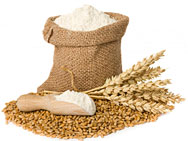
Miscellaneous
The Post-Impressionist Dutch artist Vincent Van Gogh (1853-1890) lived his entire life during the Victorian period. He did not begin to
paint until his late twenties and many of his most famous works were completed during the last two years of his life. In 1888, after two years
in Paris, Van Gogh moved to the city of Arles, in southern France where he lived until 1889 producing another 300 paintings in addition to the 200
he completed while in Paris. Once in southern France Van Gogh ventured into the neighboring countryside and painted rural landscapes often
focusing on harvests and wheat fields. After suffering from mental illness for years he committed himself to an asylum in Saint Remy in 1890
and died shortly thereafter at age 37 from a gunshot wound believed to be self-inflicted. One of his last paintings was the “Wheatfield with
Crows” see below which captures the sadness and loneliness he felt during his final days. During his lifetime few acknowledged his genius as
an artist and only after his death did the world begin to appreciate the beauty and intensity of his work. Click on the picture below to see
a larger version of it.


















